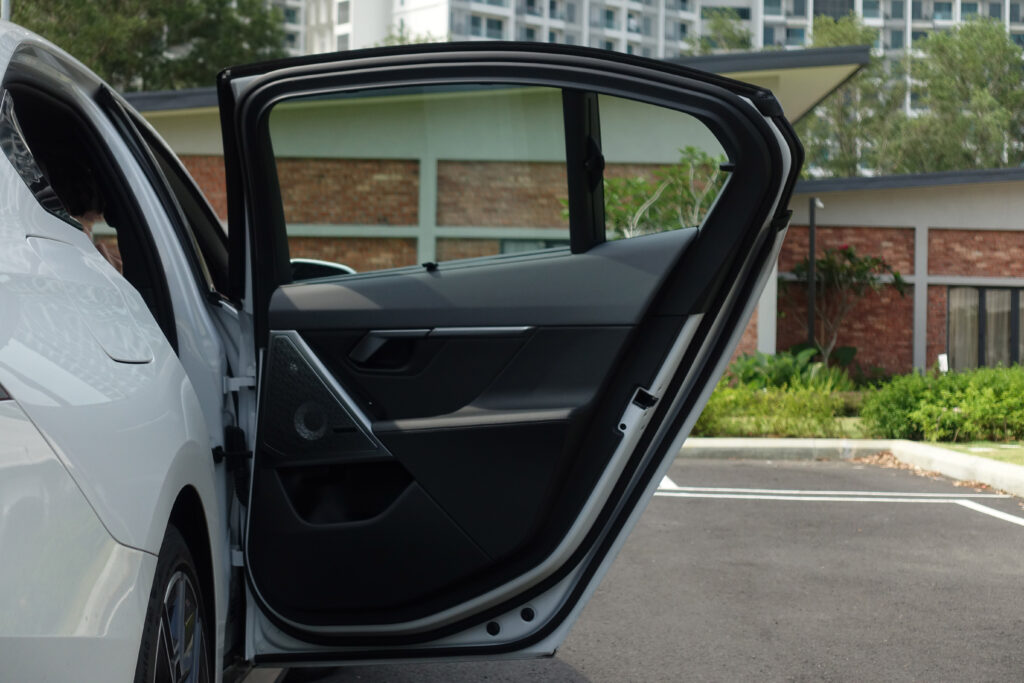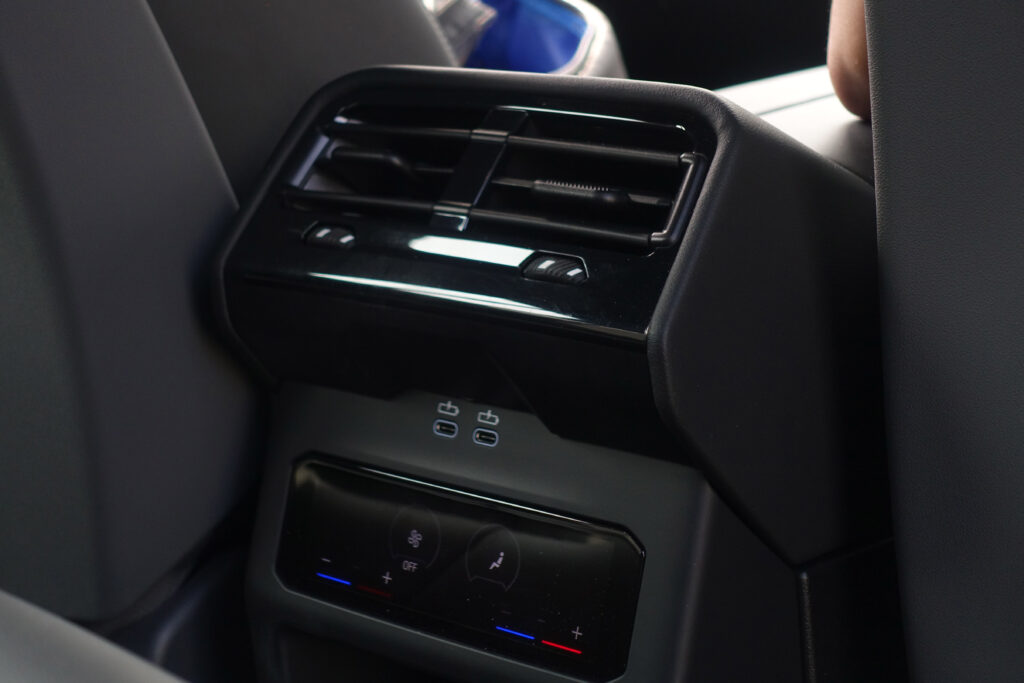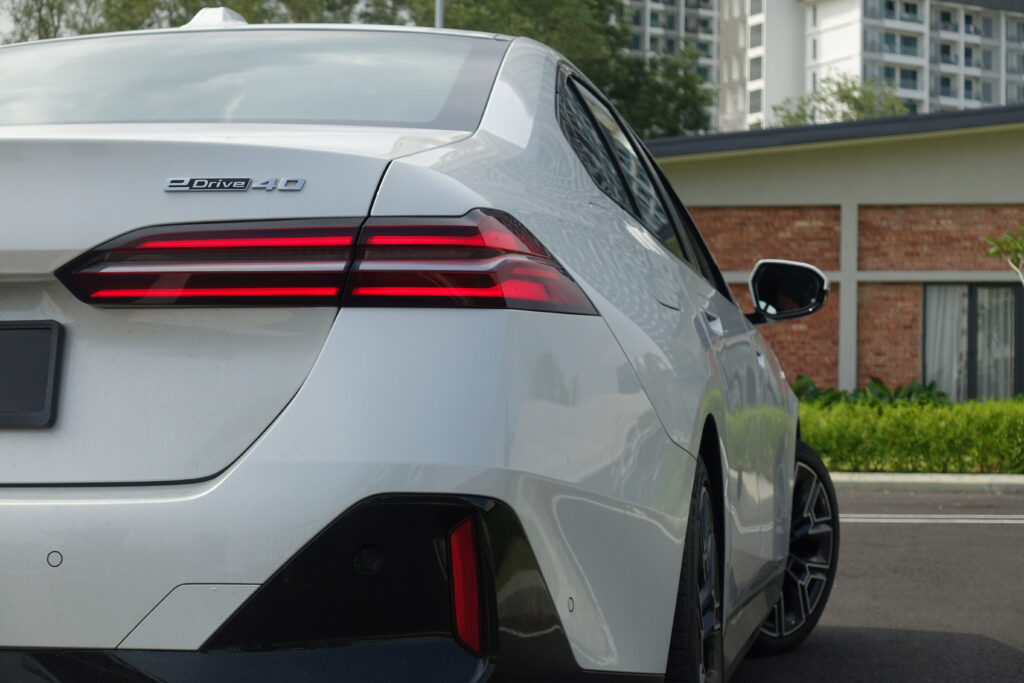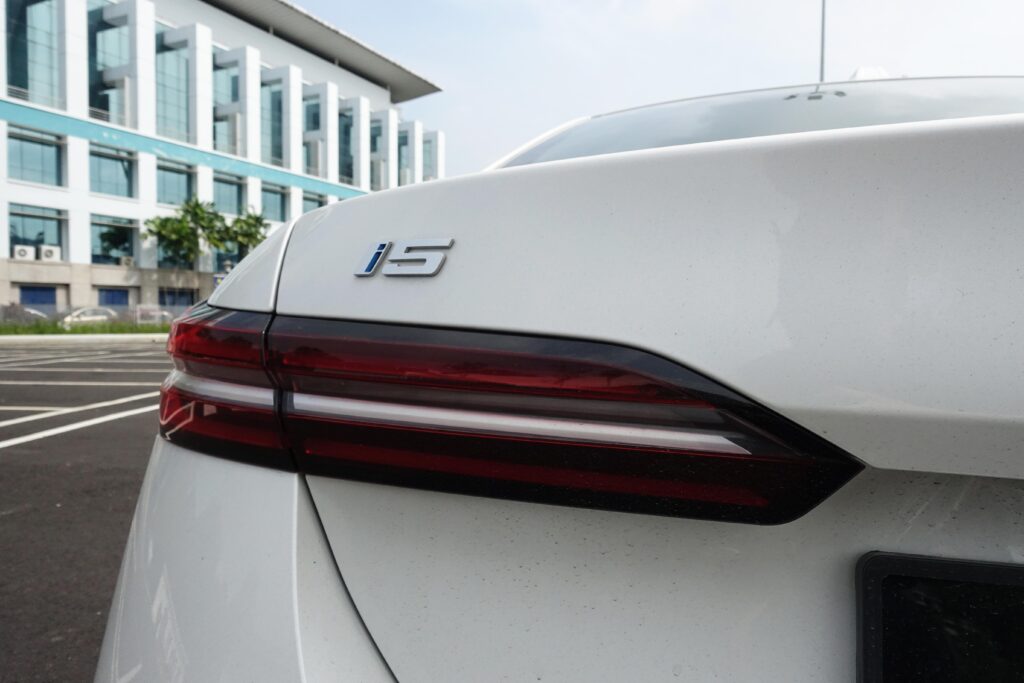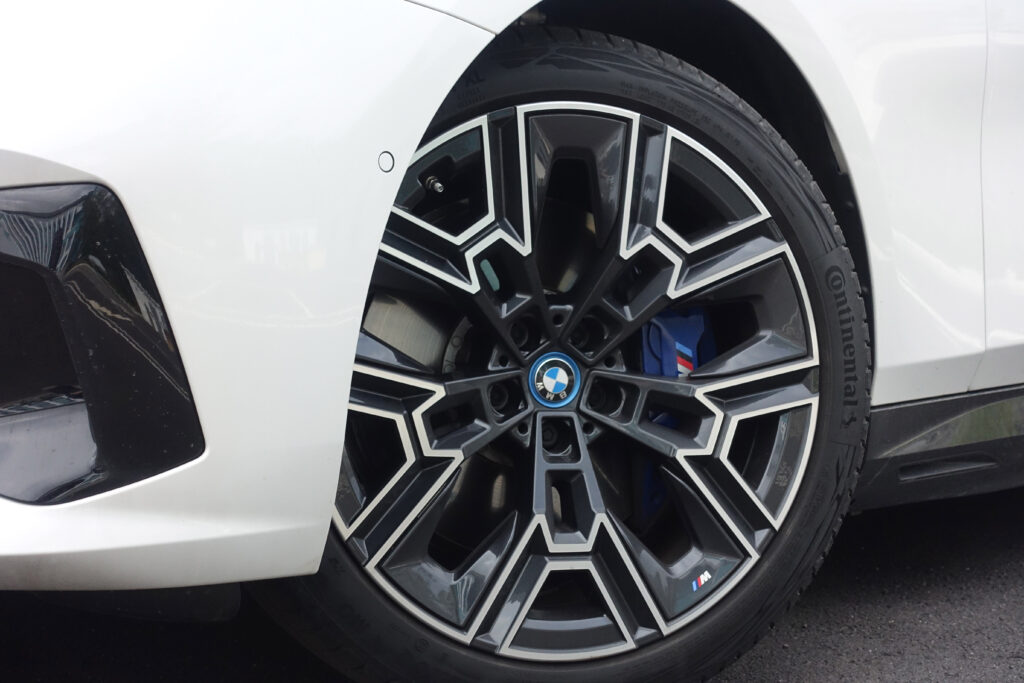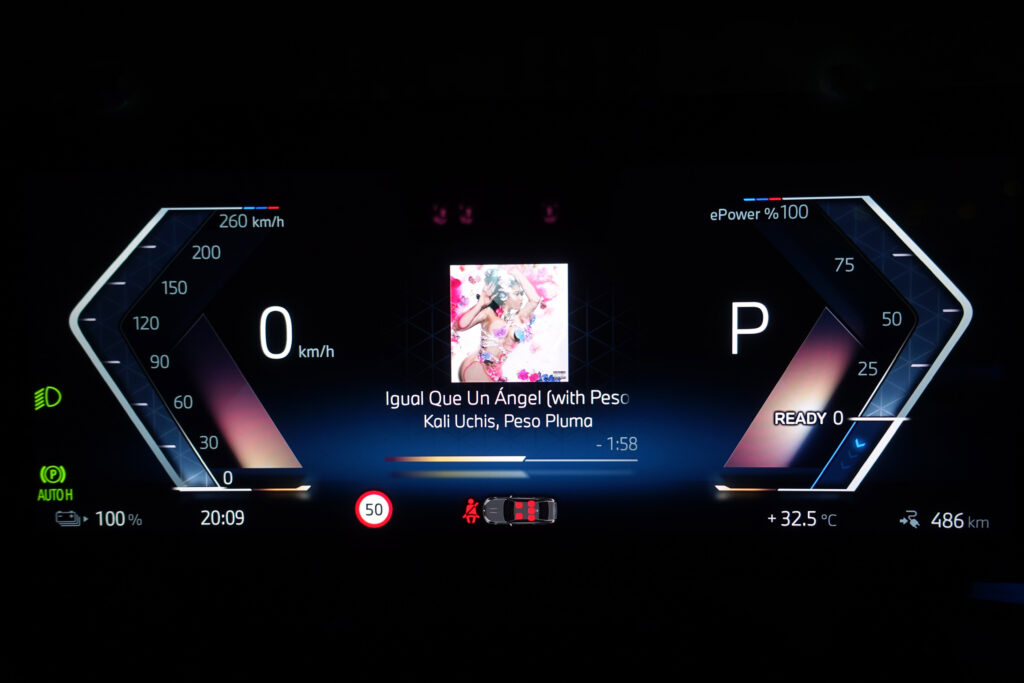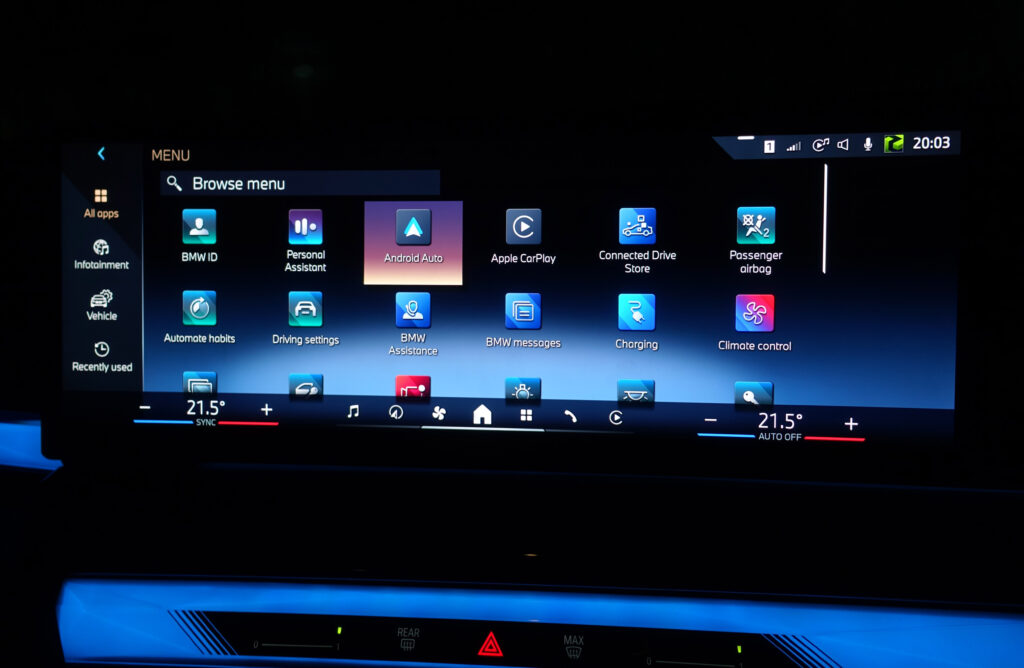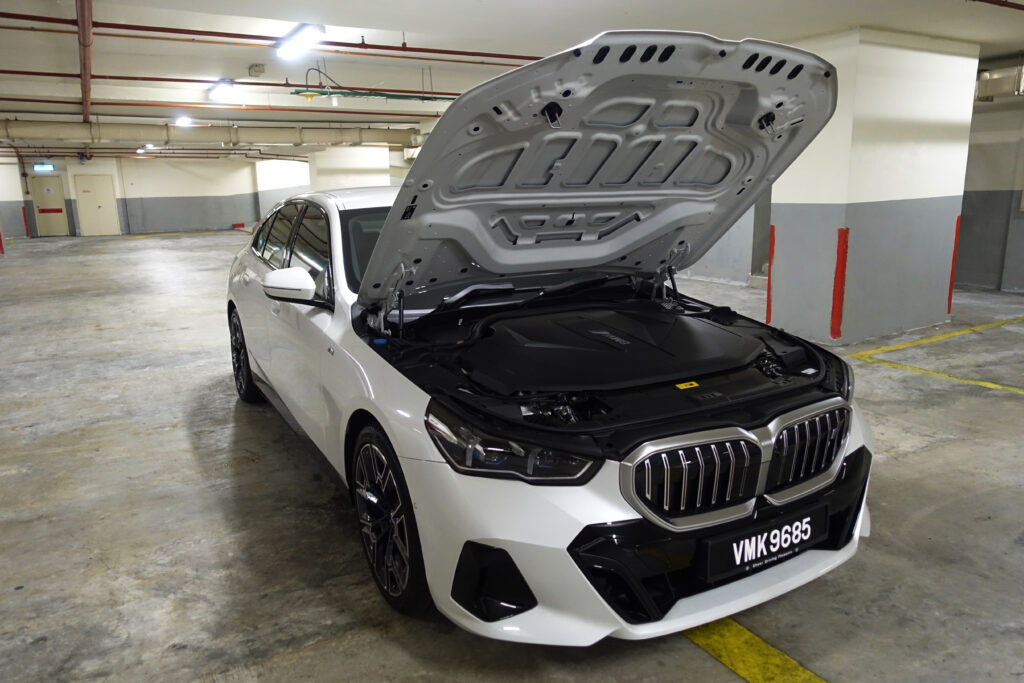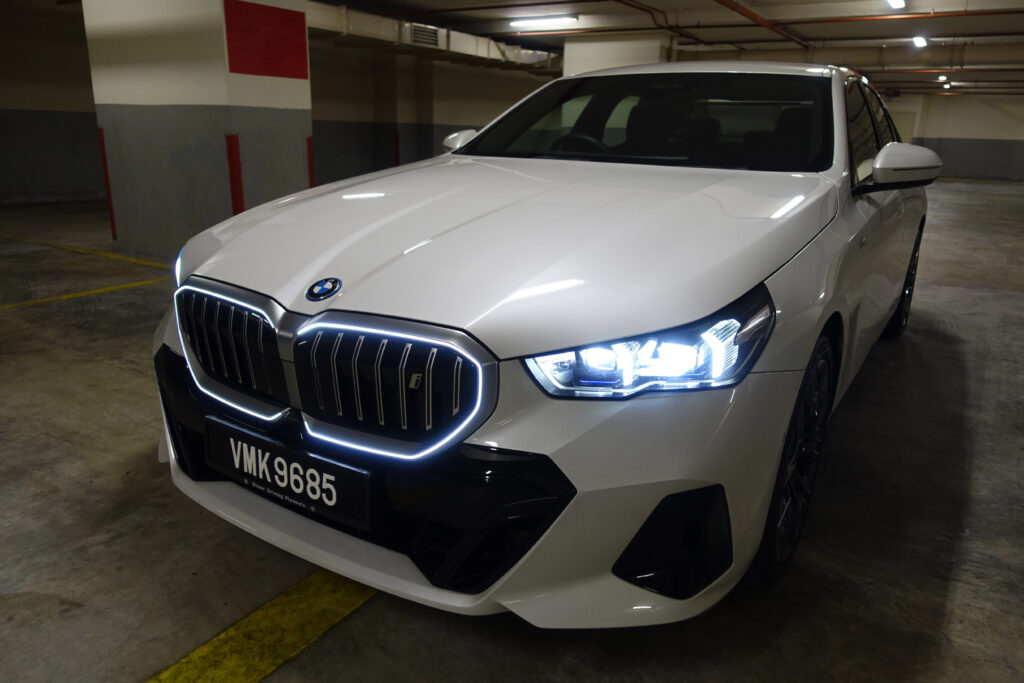Still The Ultimate Driving Machine? The BMW i5 eDrive40 review!

When it comes to product planning for their current higher-end EV lineup, two of Germany’s iconic brands – BMW and Mercedes-Benz could not have gone any different. BMW decided on utilizing the same body but adapted to both ICE and EV powertrains, while Mercedes-Benz gambled on branching out a whole new EV model range that looked nothing like its ICE siblings.
Time will tell which path was the more successful approach, but as I laid my eyes for the first time on the electric 5 Series (i5) I will be testing for the next few days, I couldn’t tell if it was powered by a combustion engine or if it’s fully electric.
So let’s have a closer look…

What is it?
You’re looking at the fully-electric BMW i5 eDrive40 M Sport, which is imported unlike its locally-assembled 520i petrol sibling. In the Malaysian market, the i5 eDrive40 M Sport is considered the entry-level model, as the next step up would be the high-performance i5 M60.
To confuse you further, our Mineral White Metallic test unit you see in these photos is not the same car from the initial launch batch. BMW Malaysia updated some of the car’s specifications less than five months after launch.
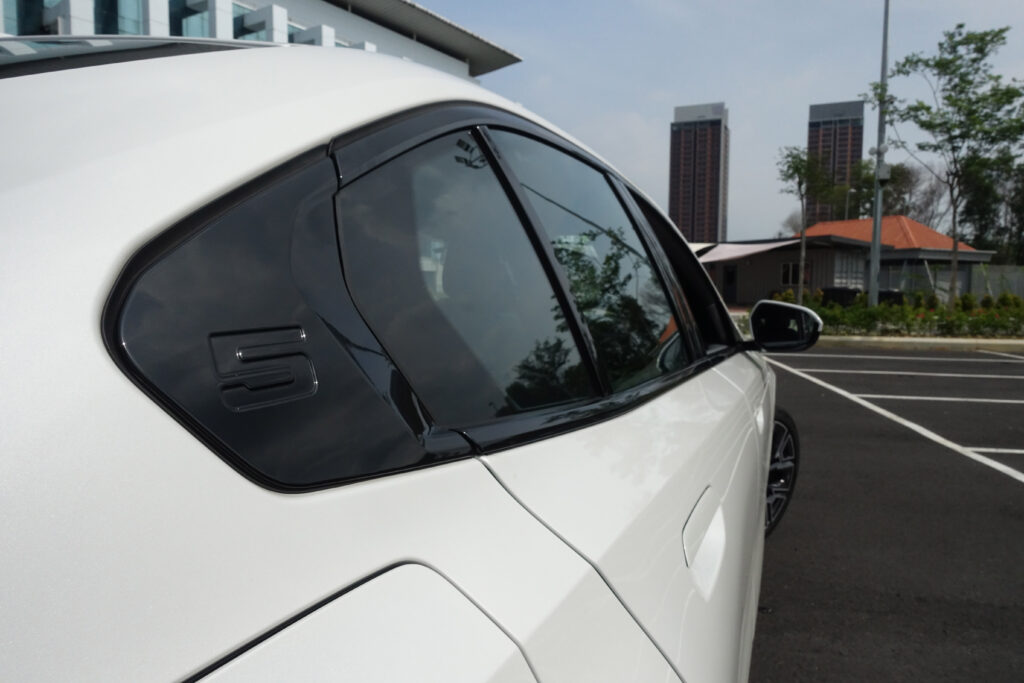
Wait what?
Yeah.
In short, the later model (like our test unit) swaps out the 21-inch rims shared with the i5 M60 for smaller 20-inch rims. Gone are also the panoramic glass roof, ventilated front seats, and the glass crystal interior trims. What you gain in return is the upgraded 22 kW onboard AC charger instead of the 11 kW from the earlier batch. More paint options are also included in the later model, otherwise everything else remains the same.
Something to keep in mind especially when browsing these in the used market.
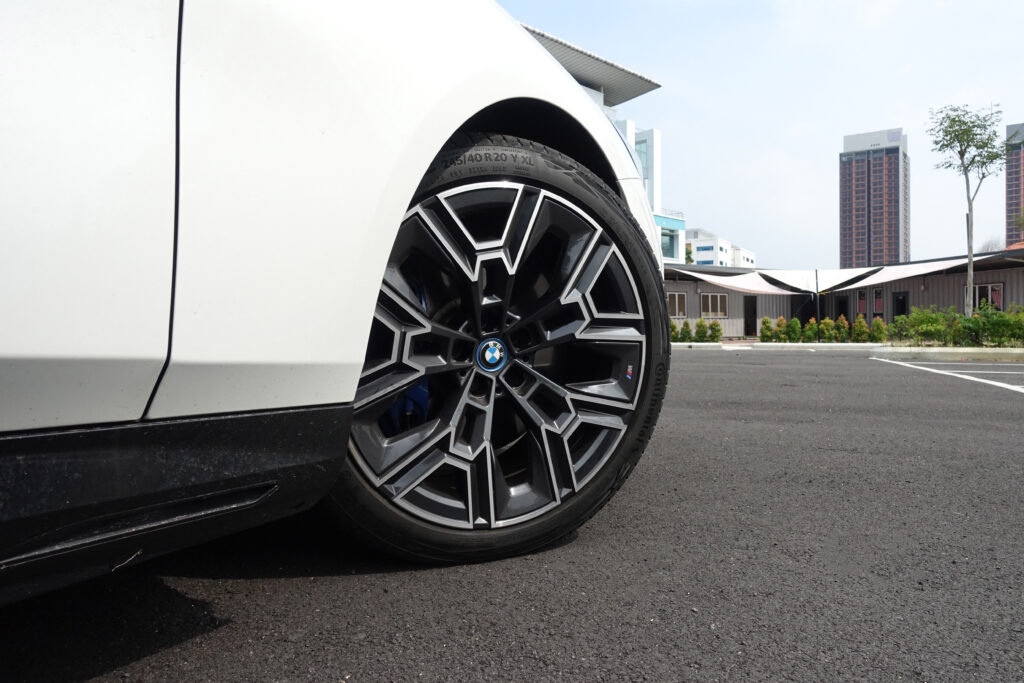
Alright, give me all the facts and figures
The i5 eDrive40 has a usable battery capacity of 81.2 kWh powering the rear electric motor making it rear-wheel-drive. You get around 300 hp and 400 Nm torque, or 340 hp and 430 Nm briefly when in Sport Boost mode or using the launch control. 0 – 100km/h can be done in 6 seconds with a top speed of 193km/h. Claimed range is between 497 – 582km in the WLTP cycle.
Charging wise, the i5 can accept a maximum AC charging rate of 22 kW as mentioned earlier, and 205 kW in DC charging. Despite being built on the more common 400 volt (V) architecture, BMW claimed that it has optimized the i5’s charging curve to charge closer to 800V architecture levels. Even when compared to the iX from just a few years ago, the i5’s charging curve is significantly more granular (smoother) in comparison.

Is it just me or does it look huge?
You’re not wrong.
As with the trend with most cars today, the latest 5 Series has grown with every subsequent generation. Compared to the predecessor, the current 5 Series is longer by 9.7 cm to 506 cm, wider by 3.2 cm to 190 cm, and taller by 3.6 cm to 151.5 cm. Its wheelbase was also lengthened by 2 cm to 299.5 cm, while the height of the car is 151.5 cm.
For context, this makes the i5 bigger than the 7 Series from two generations ago, and less than 4 cm shorter but just as wide as the previous generation 7 Series. Include the China-only extended wheelbase 5 Series and it’s larger still, but I digress.
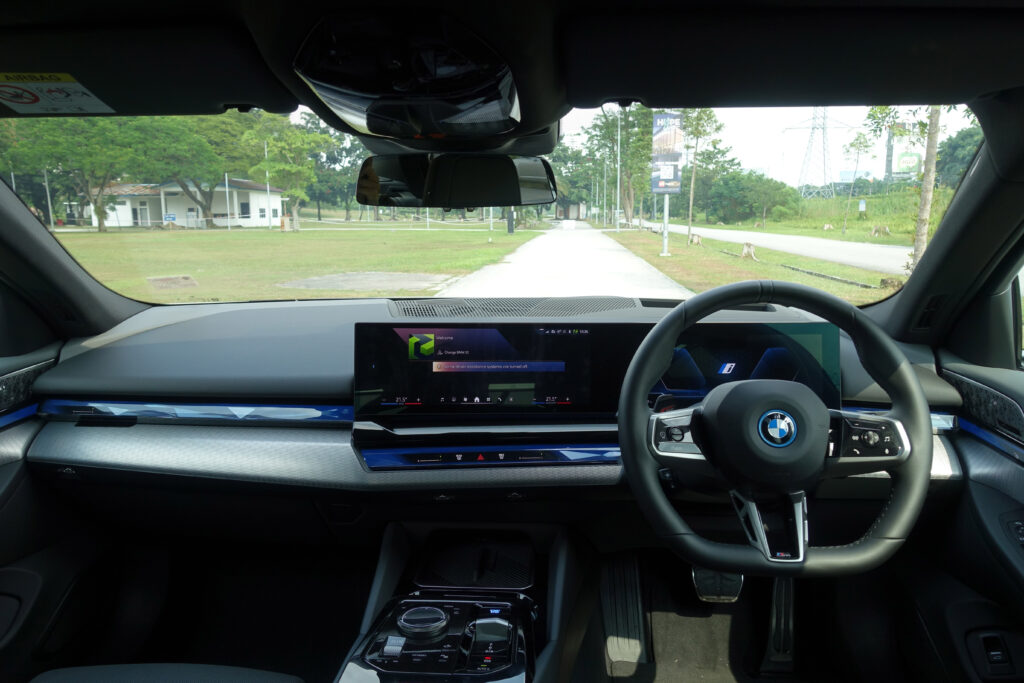
Inside must be very spacious then?
Indeed. And let’s touch on the interior while we’re here.
First seen in the current 7 Series/i7, the latest 5 Series interior is essentially a derivative of the flagship limo. Mercedes-Benz used to trump BMW when it comes to the interior ambient lighting game, but with this current generation, I think BMW has well caught up if not ahead of the curve.
Called the BMW Interaction Bar, front passengers are greeted with a prominent light bar that encapsulates the front dash and front door cards. While it’s basically a backlit transparent plastic trim, it is textured to mimic glass which looks good in daylight but especially striking at night when lit up.

BMW calls it the Interaction Bar as some basic AC and seat touch controls are embedded on the trim, but the highlight is how the ambient lighting is used in some practical applications. For example, when either front passengers open the door from the inside and the car detects an incoming hazard (like a cyclist), the Interaction Bar on that door will flash and blink red to warn you.
Slightly gimmicky but no less interesting applications are changing colours between blue and red when you adjust the AC temperature, or blink red to the rhythm of the signal (albeit just briefly) when emergency signal is activated. The ambient lighting is simply well executed and more than makes up for the cheap-looking silver trim on the dash.

While the front passengers are distracted by the Interaction Bar, hopefully they don’t notice the lack of seat ventilation from an otherwise comfortable front seats with plenty of adjustments. I personally think that front seat ventilation should have stayed even if it meant increasing the car’s price, especially with our hot and humid weather.
The rear is where the larger dimension of the i5 shines. Leg and headroom is aplenty as long as you limit to two passengers, as there’s a tall center tunnel probably due to its rear-wheel-drive architecture. With full manual sun shades, generous four USB-C ports, and individual zone rear AC, the i5 will serve well as a car to be chauffeured in. Interestingly, there are no rear seat pockets to store your reading materials but there are attachment points to install an optional tablet holder should you choose.

I’m no audiophile, but the 18-speaker, 655-watt Bowers and Wilkins sound system sounded great to my ears when I played the few lossless audio files I had. If you’re a radio listener, then you can admire the pretty metal speaker trims on the doors. In all seriousness, I’m glad the sound system is not skimped on for our local specification, especially in this price range.

Sounds like a nice place to be in. But how does it ride & drive?
As with any BMWs, there will be some expectation when it comes to the ride and handling. Thankfully, the i5 doesn’t stray far from the Ultimate Driving Machine tagline the brand once famously had. The standard steering is very light and easy for daily driving, but put it in Sport mode and it weights up noticeably enough to satisfy the occasional enthusiastic driving on your favourite winding roads.
As is the case with pretty much all modern electric power steering system, don’t expect any steering feel, so BMW’s expert tuning is all you can rely on for “steering feedback”. As expected, everything about the steering is predictable and well judged.

Despite having modest power while weighing over 2.2 tons, the i5 hides its heft surprisingly well. Thanks to the immediate power delivery, 300 hp and 400 Nm torque is more than sufficient without being uncomfortably quick which befits the i5’s primary task as a luxury sedan.
Even in Sport Boost mode, which gives you more power for 10 seconds and perfect for overtaking, isn’t overwhelming to the point of being uncomfortable. There are other much more affordable EV options out there if sheer acceleration is what you want. Otherwise, there’s also the i5 M60 for that job.
The efficiency and comfort oriented Continental EcoContact 6Q rubbers that comes fitted with the i5 is another hint on what this car is primarily designed for. As they are not grippy performance tyres, launching from a standstill on damp surfaces is enough to get some brief tyre squeal before it hooks up again. Full throttle mid corner will also kick the rear sideways just enough to have some fun before traction control pulls you back in line.

Enthusiastic EV driving is usually a muted experience where the acceleration takes center stage, and driving the rear-wheel-drive i5 reminded me that fun could still be had with an EV even without crazy acceleration figures and fruity engine notes. There is however an artificial sound that accompanies your driving, which thankfully can be deactivated if not desired.
As you stop abusing the poor eco tyres and use it as intended, you’ll find that the i5’s adaptive dampers and suspension tuning is very impressive. Never once does the i5 feel harsh on bad surfaces even in Sport mode despite riding on 20-inch rims. So the aforementioned downgrade from the initial larger 21-inch rims may be a blessing in disguise. Plus, the 20-inch rims still looks good and less prone to curb damage, and cheaper to replace if it does. A win win.

How about its autonomous driving system?
The i5 is capable of Level 2 autonomous driving and fully equipped with Driving Assistant Professional plus all the active safety system one could expect. BMW claims that the i5 can drive itself in its lane while keeping its distance from other vehicles up to a top speed of 210 km/h, which is something we could only test on the German autobahn, so we’ll take their word for it.
At much slower speeds however, such as stop and go traffic, the i5’s autonomous driving worked extremely well and is one of the smoothest one I’ve experienced. Rarely do I have to take over even when taking minor corners. The i5 is also the first in its segment locally to have the capability to switch lanes on its own, just signal to the direction of choice and the car will cautiously move lane when it thinks it’s clear. A very effective party trick that is sure to impress your passengers.

Sounds great. Anything you dislike about the car?
No car is perfect of course, and the infotainment is the first thing that comes to mind. First time I sat in the car, I spent a good 30 minutes or more going through the countless menus and sub-menus just to see what the car can or cannot do. After a few days with it, I still struggle to find certain settings that I’m looking for.
This is something that will take weeks, if not months living with the car in order to get accustomed to the convoluted menu. This new iDrive system plagues the whole BMW range, so either you live with it or go with a different brand.

The touch-sensitive “buttons” surrounding the rotary knob is also another annoyance and potential safety risk. As they consist of various quick-access to key menus that would be used regularly, having a few tiny dents as guides is not sufficient and I still find myself taking my eyes away from the road to see which buttons to press. BMW is not alone in this of course, and the over reliance of touch/haptics over physical buttons is not a trend that should continue.

The lack of a front trunk is also a surprise considering these are designed from the beginning with electrification in mind. I’m not asking for much, just enough space to store a charging cable to free up the rear trunk is better than nothing.
The i5’s direct rival (Mercedes-Benz EQE) also has no front storage which is arguably more disappointing as it’s an EV-only platform with no ICE variant to account for. If Audi can offer a generous front storage in their e-tron GT (and Porsche Taycan twin), I’m not sure why BMW and Mercedes-Benz couldn’t figure it out.
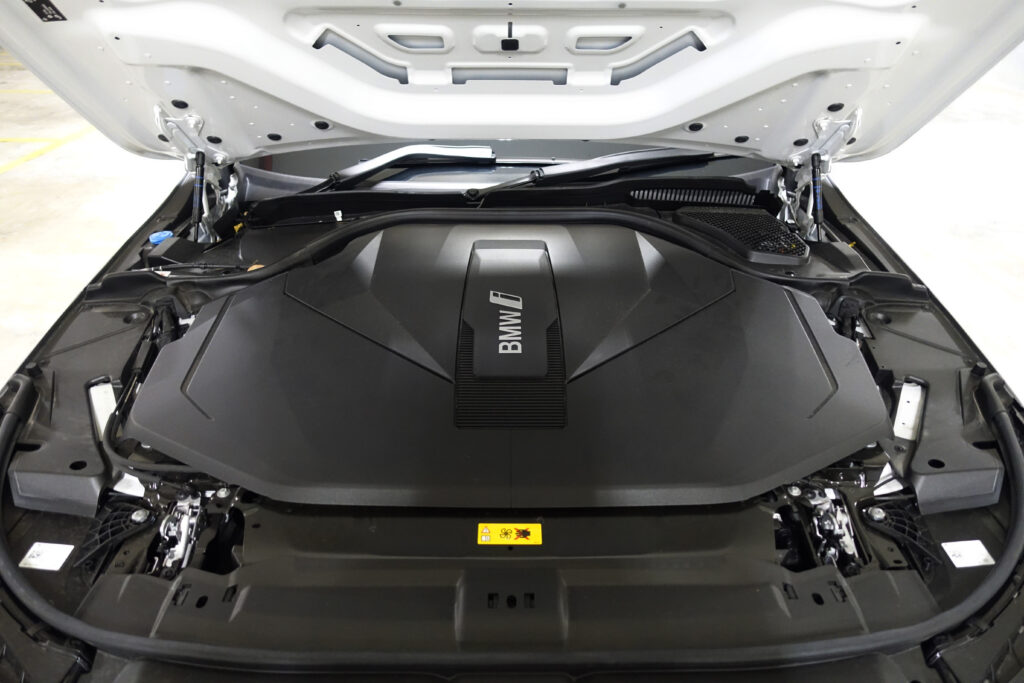
How much is it?
The BMW i5 eDrive40 M Sport starts at RM399,800 on-the-road before insurance and comes with a basic 2-year, unlimited-mileage warranty. Otherwise you can pay RM420,100 which includes 5-year warranty and 6-year maintenance.
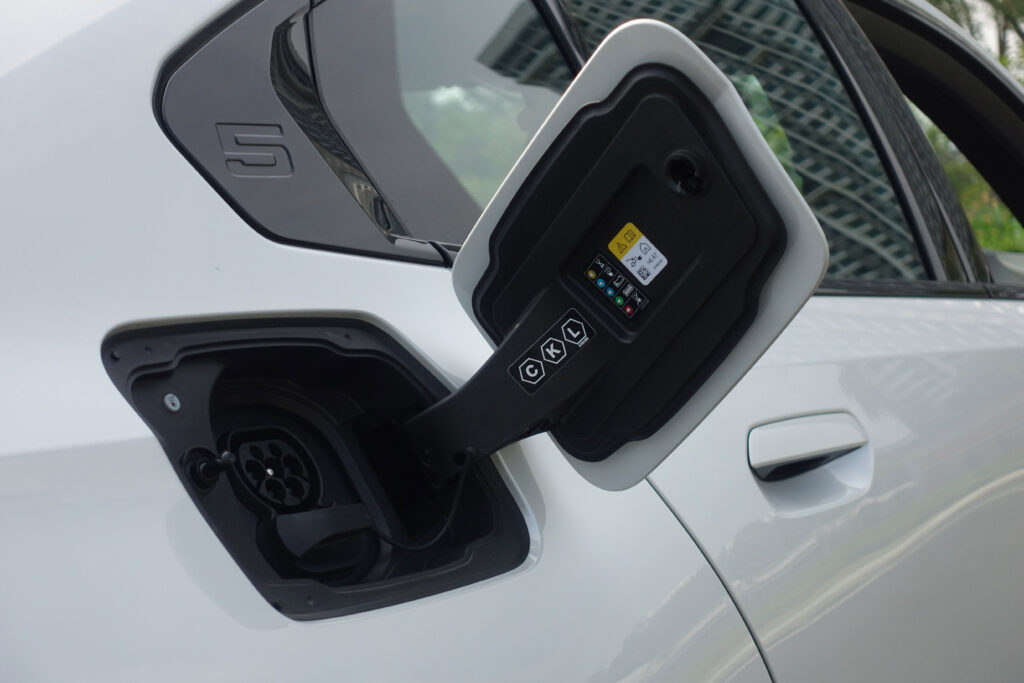
What other options are there?
The most direct competitor will be the Mercedes-Benz EQE 350+ which is offered in various trim levels, and priced between RM379,888 to RM429,888 and comes with a standard 4-year unlimited mileage warranty.
The EQE 350+ has practically identical real-world performance to the i5 eDrive40. However, the EQE features a slightly larger battery and more aero-efficient body shape to provide nearly 100 km more WLTP driving range on paper at 682 km. Should outright range be a priority, Mercedes-Benz is the way to go.
Some key highlights with the higher trim EQE compared to the i5 includes having a full panoramic glass roof, air suspension, and rear-wheel-steering. Still no ventilated front seats, but it is heated. AC charging is identical to the i5 at 22 kW but DC charging is slower at 170 kW instead of 205 kW from the i5.

So what’s the conclusion?
When BMW launched the previous generation 5 Series (G30), their ingenious tagline for the car was “Business Athlete”: a luxury executive sedan that feels at home being driven in and be driven. After spending a few days with this new (G60) generation, I find the same can still be said to describe the i5 eDrive40.
BMW has essentially nailed the brief of building an electric luxury sedan that can eat up the miles in comfort while holding its own in winding backroads. Sure, it has grown quite a bit in size but what you get in return is near limo-like rear space that no VIPs would complain spending time in.
So drop off your guests, loosen that tie from your business attire and go for a drive…
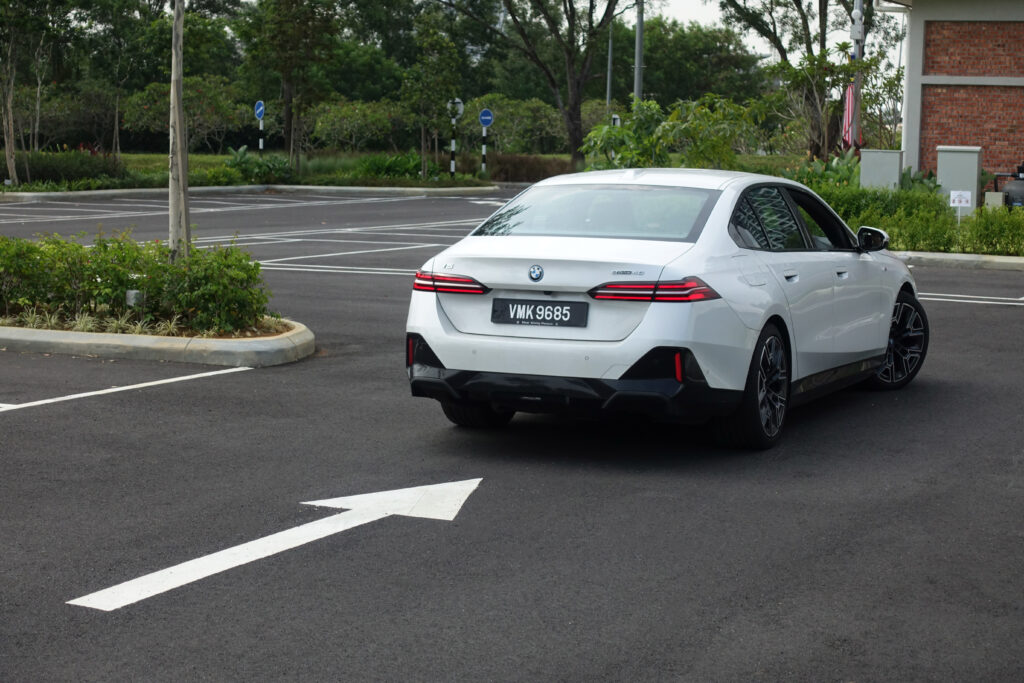
Check out a detailed vehicle tour of the car from our friend at alexlovesmac below:



